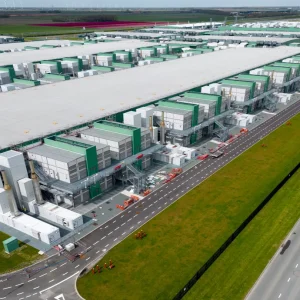
Blockchain is often mistaken for Bitcoin, the cryptocurrency that makes headlines on

almost a daily basis. However, in reality, the first step to understanding blockchain is to put aside any thoughts of cryptocurrencies. Blockchain may be the technology that many are built on, but it is now gaining a reputation in its own right, as a
transformational technology that can improve transparency, productivity and security for business.
A global realisation is emerging that blockchains can bring new efficiencies to commerce and profoundly change how the world conducts business and interacts with governments. Major IT providers like IBM, Microsoft, and Infosys are collaborating with banks and other financial institutions in a race to develop commercial blockchain platforms.
The key features of blockchain
I like to think of blockchain as a digital version of a classic ledger book holding a list of transactions or events people want to track. However, this new digital ledger has the capability to record and, most importantly secure, many kinds of transactions.
The most important and disruptive feature of blockchain is that it’s a distributed ledger—multiple parties have a copy of the entire ledger. That means many kinds of business transactions can be decentralised, eliminating the cost, complexity, and slowness of involving trusted intermediaries.
What makes blockchains so appealing is that they are append-only data structures, which means that entries can only be added at the end of the list. Once added, entries are immutable and cannot be changed or deleted without corrupting the chain. Each entry in a blockchain is digitally signed by whomever creates the entry, and the entire blockchain is also digitally signed to make tampering easily detectable.
Blockchains are a reliable and authoritative record of events, financial or otherwise. No single person or company controls access to the data because any participant can have their own copy. Transactions are guaranteed never to change and their source cannot be repudiated. A blockchain can consist of many replicas of the same data, which enables each party to have an up to date copy of the data. A new block appended to one replica is eventually copied to every other replica.
Along with financial transactions, blockchains can hold code which is triggered automatically when new blocks are added to the chain. This practice is called a smart contract, because these code blocks are typically used to enforce rules or execute actions dictated by legal contracts. For example, a rule to release payment when and only if all goods ordered have been signed as delivered, can be encoded into the blockchain rather than relying on a user to monitor the order and send payment. Smart contracts can also be used to propagate data from one to another (beyond any replicas) thus creating a business ecosystem automated and secured by a collection of blockchains.
Main considerations prior to blockchain adoption
Despite being in the news for several years as the technology driving Bitcoin, blockchain for commercial use is still very new. Much of the commercial uptake is still in the proof of concept (or startup) stage. Therefore, it is very early days and businesses should not be tempted to jump in too early.
There are four key areas to consider when deciding if your business is ready for blockchain in 2018.
- Standardisation – Be aware that as an application programming interface (API), standards need to be developed before there is widespread adoption of the technology. Gartner expects the industry to stabilise in 2018 with 75 commercial blockchain platforms before consolidating to about five platforms in 2019.
- Technological challenges – There are still underlying technology challenges that need to be addressed to make blockchain robust. This is especially true for the distributed capabilities of blockchain that allow each party to have their own writeable copy of the same historical record. An entry written to one replica will eventually arrive at the other replicas, which then have to collaborate and decide if the new entry is valid. This can be harder than it sounds to facilitate.
- Security – Whilst in general blockchain is considered a step forward for securing transactions, like most things in computing, security is not inherent. Blockchain uses public key encryption, hashing, and digital signatures, and other mechanisms which are well known, but not always administered correctly. Missteps in securing a blockchain, or simple bugs in the platforms, can cause serious disruption.
- Policy – As is often the case for innovative technologies, there are policy issues to be worked out. For example, if a blockchain is immutable, how can the “right to be forgotten”, a mandatory requirement in the EU’s General Data Protection Regulation (GDPR), be applied? These and other anomalies still need to be ironed out.
Ultimately, there is no doubt that this is a disruptive technology which has the potential to transform industries. However, despite recent momentum, it is a technology that isn’t (yet) particularly easy to use for many businesses. The platforms are still maturing and, like many other software platforms, they are subject to bugs and operational errors.
However, blockchain technology is likely to be intrinsically embedded within business processes in years to come. Those businesses that have technology with flexible deployment options, and those with modern enterprise resource planning (ERP) solutions in place, will be in a better position to take advantage of the technology and adapt faster.






